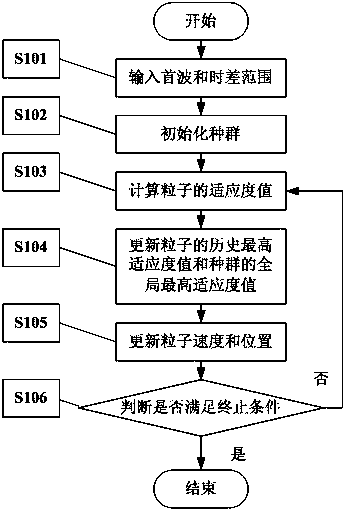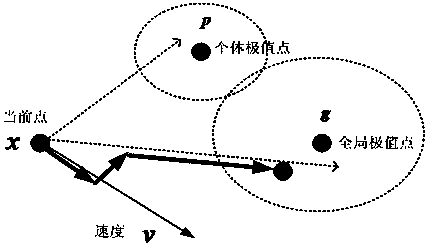Real-time interval transit time extraction method based on particle swarm optimization
A particle swarm optimization and acoustic time difference technology, which is applied in the field of oil drilling and logging, can solve the problems of difficulty in implementation, large amount of calculation, easy to fall into local minimum, etc., and achieve the effect of reducing the amount of calculation and extracting quickly and accurately.
- Summary
- Abstract
- Description
- Claims
- Application Information
AI Technical Summary
Benefits of technology
Problems solved by technology
Method used
Image
Examples
Embodiment Construction
[0049] The technical solutions of the present invention will be described in further detail below with reference to the accompanying drawings and embodiments.
[0050] Refer to attached figure 1 , a method for real-time extraction of acoustic time difference based on particle swarm optimization, comprising the following steps:
[0051] The first step S101: specifying the arrival time of the first wave of a certain mode wave and the range of the time difference of the acoustic wave.
[0052] Given the arrival time of the first wave of a certain model wave and the range of acoustic time difference, the following steps are required to realize it: firstly, geological modeling needs to be carried out based on regional seismic data, adjacent well logging data, and mud logging data, and the stratum to be drilled is inverted information, and then estimate the propagation velocity of the acoustic wave in the formation according to the formation information, and finally estimate the arriv
PUM
 Login to view more
Login to view more Abstract
Description
Claims
Application Information
 Login to view more
Login to view more - R&D Engineer
- R&D Manager
- IP Professional
- Industry Leading Data Capabilities
- Powerful AI technology
- Patent DNA Extraction
Browse by: Latest US Patents, China's latest patents, Technical Efficacy Thesaurus, Application Domain, Technology Topic.
© 2024 PatSnap. All rights reserved.Legal|Privacy policy|Modern Slavery Act Transparency Statement|Sitemap



